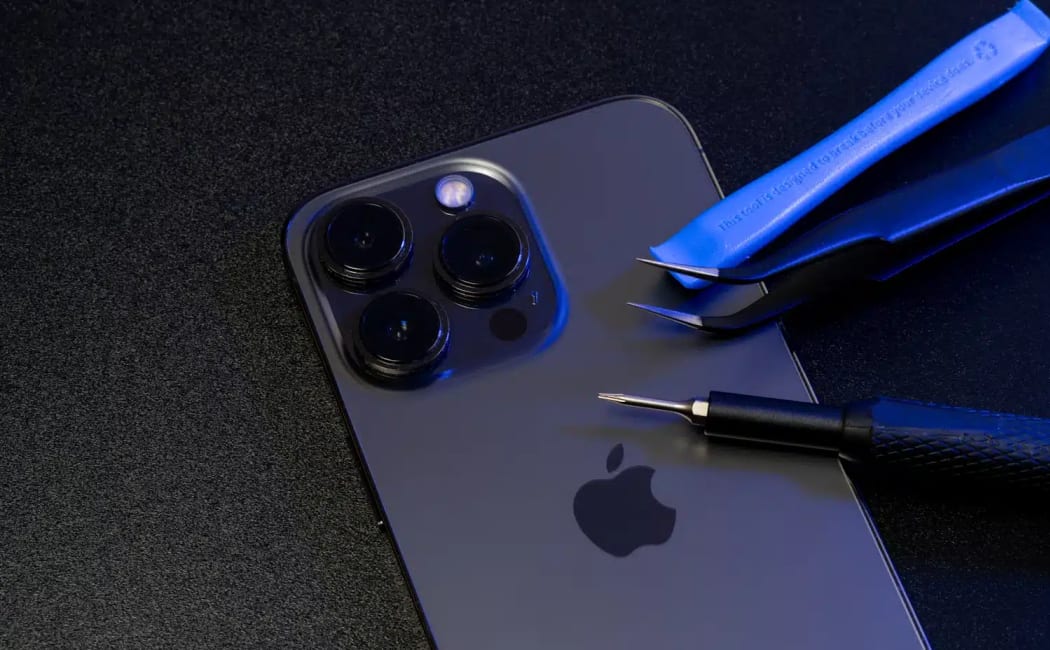iPhone 17 Series Now Eligible for Apple Self Service Repair

iPhone 17 Series Now Eligible for Apple Self Service Repair
In a significant move towards giving end-users more control over their devices, Apple has expanded its Self Service Repair programme to include the new iPhone 17 lineup. With this update, owners of the iPhone 17, iPhone 17 Pro, iPhone 17 Pro Max and the newly introduced iPhone Air model can now access genuine Apple parts, tools and repair manuals directly from Apple’s Self Service Repair portal — enabling authorised do-it-yourself (DIY) repairs and enhancing device longevity.
What the Self Service Repair programme covers now
The Self Service Repair programme was originally launched in the United States in April 2022, allowing experienced users to purchase genuine Apple parts and tools for out-of-warranty repairs. :contentReference[oaicite:2]{index=2} With the latest inclusion of the iPhone 17 series, Apple has broadened the eligible device list and parts catalog — meaning end users now have greater freedom to fix displays, batteries, cameras, speakers and glass panels using genuine manufacturer-approved components.
This update is available in select regions including the United States, United Kingdom, Canada and parts of the European Union. Apple emphasises that while the parts and tools are identical in quality to those used in Apple Authorised Service Providers (AASPs), the process is intended for users who have prior experience with electronics and repairing delicate devices. :contentReference[oaicite:3]{index=3}
Why this change matters in the broader “right to repair” landscape
This expansion aligns with growing momentum around the right to repair movement — the view that consumers should have access to repair tools, parts and information to maintain and prolong the lifespan of their devices. In allowing iPhone 17 series owners to source genuine Apple parts and tools, Apple is acknowledging user empowerment, device sustainability and reduced dependency on proprietary repair channels.
Previously, repairs of Apple devices often required visiting the Genius Bar or an authorised service provider, often at premium prices. By opening up self-repair options, Apple signals a shift in its repair ecosystem. That said, observers note that DIY repairs still carry risk: without proper tools or training, there’s potential for damage, voided warranty or compromised performance. :contentReference[oaicite:4]{index=4}
What parts and tools can iPhone 17 owners access?
Under this programme update, eligible iPhone 17 series users can now:
- Purchase **genuine Apple parts** such as batteries, camera modules, speakers and front/back glass panels.
- Order professional-grade **tools and toolkits** specifically designed for Apple repairs — the same used by Apple’s own service centres. :contentReference[oaicite:5]{index=5}
- Access detailed **repair manuals and guides** that explain step-by-step how to carry out the repair, including safety steps and calibration procedures. :contentReference[oaicite:6]{index=6}
- Return replaced parts for recycling or receive credit as part of Apple’s sustainability initiative. :contentReference[oaicite:7]{index=7}
How this impacts iPhone 17 users and what you should consider
If you own an iPhone 17, iPhone 17 Pro, iPhone 17 Pro Max or iPhone Air and you’re mechanically adept, this service gives you a compelling alternative to traditional repair paths. You gain the freedom to handle common issues like battery degradation or screen damage personally, often at lower cost than factory authorised service centres.
However, the DIY route comes with caveats: improper tool use, mishandling delicate components or missing calibration steps can result in sub-optimal performance or even further damage. Apple ‘s official guidance reminds users that self-repair is ideally suited only for those with experience repairing electronic devices. :contentReference[oaicite:8]{index=8}
It’s also important to note regional availability: users in covered markets may access the programme now, while others may need to wait for expansion. Always verify your region’s eligibility and whether your device model is supported.
Benefits at a glance
- Greater control: You are in charge of your device’s maintenance, not entirely reliant on external service providers.
- Cost savings potential: With genuine parts available, repairs could become more economical compared to some third-party options.
- Genuine quality: Parts and tools supplied are the same as those used by Apple’s authorised centres, maintaining quality and compatibility.
- Sustainability boost: DIY repairs can extend device life, reduce e-waste and support responsible recycling via Apple’s part-return programme.
Potential drawbacks and things to watch
Despite the advantages, self-servicing isn’t for everyone. Blocks to keep in mind include:
- Technical difficulty: Repairs on modern iPhones often involve microsoldering, delicate flex-cables and precise calibration — experience helps.
- Warranty risks: Improper repair may lead to safety concerns or affect remaining warranty coverage.
- Regional limitations: Availability in some countries may lag, and shipping times or cost of tools/parts may vary significantly.
- True cost: While DIY may be cheaper, tool-kit rentals or part purchases can still add up; for some users professional repair may remain more practical. :contentReference[oaicite:9]{index=9}
What this means for the future of Apple repairs
This update for the iPhone 17 series may mark a broader shift in how Apple approaches serviceability, user autonomy and repair ecosystems. With genuine parts, official tools and step-by-step manuals now accessible, users are empowered more than ever before to maintain their devices, extend lifespan and reduce reliance on fixed repair centres.
At the same time, Apple retains control over quality, parts supply and compatibility, meaning this is not a fully open-source repair movement — but a controlled empowerment strategy. For consumers and repair advocates alike, this represents incremental progress in the global right-to-repair movement.
Final verdict: Should you use the self-repair route?
If you’re tech-savvy, comfortable with electronics and own one of the supported iPhone 17 models, this expansion of Apple’s Self Service Repair programme offers a flexible, high-quality path to address device issues on your own terms. You'll benefit from genuine parts, official tools and comprehensive manuals — all while retaining your device’s official servicing quality.
On the other hand, if you’re unsure of your technical ability, don’t have experience with delicate repairs or your region isn’t yet supported, sticking with authorised Apple service centres remains a safe and reliable option.
In short: The iPhone 17 series joining Apple’s self-repair ecosystem is a meaningful empowerment of consumers — offering genuine parts, tools and manuals to skilled users. While not for everyone, it signals a meaningful evolution in device repair, sustainability and user choice.
